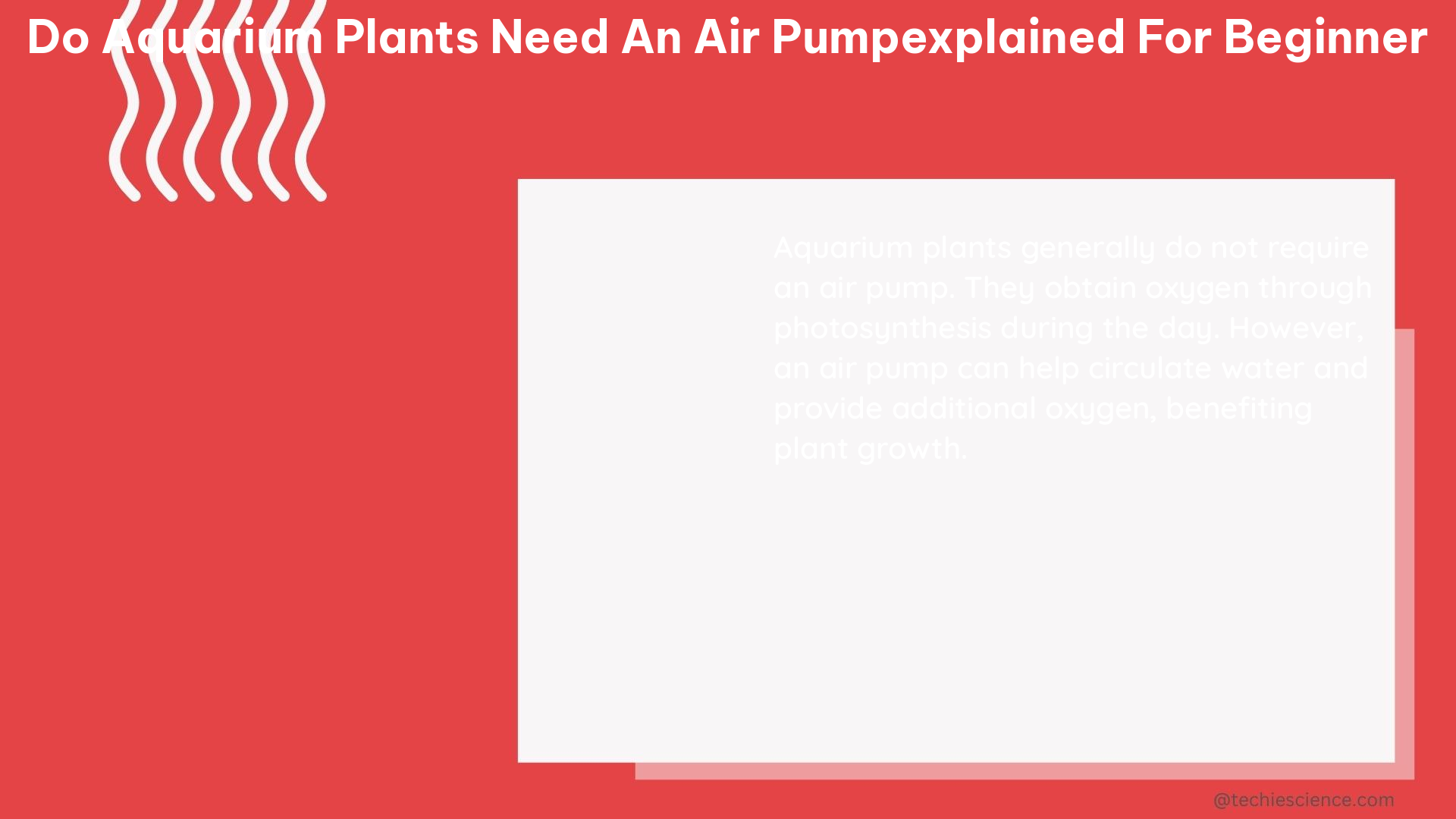Aquarium plants do not necessarily require an air pump to thrive, but the addition of an air pump can provide several benefits in certain situations. This comprehensive guide will explore the role of air pumps, their impact on plant growth, and the technical considerations for beginner aquarium enthusiasts.
The Role of an Air Pump in Aquarium Ecosystems
An air pump is a device that introduces air bubbles into the aquarium water, facilitating gas exchange between the water and the atmosphere. This gas exchange process is crucial for maintaining adequate dissolved oxygen levels, which are essential for the health and survival of aquatic organisms, including fish and plants.
Promoting Oxygenation
The air bubbles created by the air pump agitate the water surface, increasing the surface area for gas exchange. This process allows for the replenishment of dissolved oxygen in the water, which is vital for the respiration of aquatic life. Adequate oxygenation is particularly important for fish, as they rely on dissolved oxygen to breathe.
Enhancing Circulation
In addition to oxygenation, the air bubbles generated by the air pump can also improve water circulation within the aquarium. This increased circulation can help distribute nutrients and CO2 more evenly throughout the tank, benefiting the overall health and growth of aquarium plants.
The Impact of Air Pumps on Aquarium Plants

While air pumps can provide several benefits, their impact on aquarium plants can vary depending on the specific setup and requirements of the planted tank.
Planted Tanks with Adequate Surface Agitation
In a well-planted aquarium with sufficient surface agitation from filters or water movement, an air pump may not be necessary. The natural surface agitation can promote adequate gas exchange and maintain sufficient dissolved oxygen levels without the need for an additional air pump.
Planted Tanks with CO2 Injection
If you are actively injecting CO2 into your aquarium water to enhance plant growth, the use of an air pump can be counterproductive. The air bubbles created by the pump can cause the dissolved CO2 to escape from the water, reducing the amount available for plant uptake. In this case, an air pump is generally not recommended.
Planted Tanks with Minimal Surface Agitation
In aquariums with minimal surface agitation, such as heavily planted tanks or those with a calm water surface, an air pump can be beneficial. The air bubbles introduced by the pump can help increase the gas exchange and maintain adequate dissolved oxygen levels, which can be particularly important for the health and growth of aquarium plants.
Technical Specifications for Air Pumps
When selecting an air pump for your aquarium, it is essential to consider the technical specifications to ensure it meets the requirements of your setup.
Air Pump Size and Flow Rate
Air pumps come in various sizes, with different flow rates measured in liters per hour (LPH) or gallons per hour (GPH). The appropriate pump size depends on the volume of your aquarium and the specific needs of your setup. As a general guideline, a good starting point is to choose an air pump with a flow rate of approximately 2-4 times the volume of your aquarium.
Noise and Energy Consumption
When selecting an air pump, consider the noise level and energy consumption. Some air pumps can be relatively noisy, which may be a concern in certain environments. Additionally, the energy consumption of the air pump should be taken into account, as it can contribute to the overall operating costs of your aquarium setup.
DIY Air Pump System
Creating a simple air pump system for your aquarium can be a cost-effective and customizable solution. Here’s a step-by-step guide:
- Choose an Air Pump: Select an air pump with the appropriate flow rate for your aquarium size and setup requirements.
- Obtain Airline Tubing: Acquire a length of airline tubing that can reach from the air pump to the desired location in your aquarium.
- Connect the Air Stone: Attach an air stone to the end of the airline tubing. The air stone will create the air bubbles that will be introduced into the water.
- Set Up the System: Place the air pump in a suitable location, such as outside the aquarium or on a nearby surface. Connect the airline tubing to the air pump and place the air stone at the desired location in the aquarium.
- Adjust the Airflow: Experiment with the airflow rate to find the optimal level for your aquarium setup. You may need to adjust the airflow based on factors such as plant growth, fish activity, and water surface agitation.
By following these steps, you can create a simple and customizable air pump system to meet the specific needs of your aquarium plants and other aquatic inhabitants.
Conclusion
In summary, while aquarium plants do not necessarily require an air pump to survive, the addition of an air pump can provide several benefits in certain situations. By understanding the role of air pumps, their impact on plant growth, and the technical considerations, you can make an informed decision on whether an air pump is necessary for your planted aquarium setup.
References:
– Planted Tank Forum – Non-CO2 Tank: Air Pump or Not?
– YouTube – Do I Need an Air Pump for a Planted Tank?
– FishLore Aquarium Forum – Do I Need an Air Pump for Planted Tank?
– YouTube – Air Pump vs. No Air Pump in Planted Aquarium
– Reddit – Do I Need an Air Pump/Stone?
